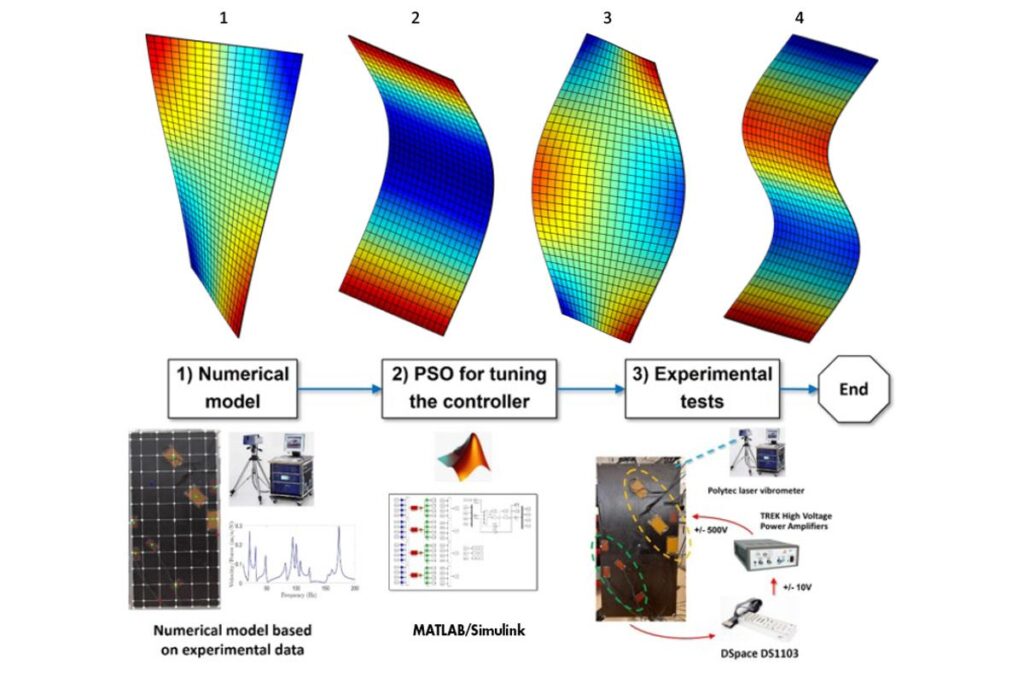Using Particle Swarm Optimization for Active Vibration Controller Tuning
Feedback Controllers Fine-Tuned to Achieve Minimal Spillover
“MATLAB and Simulink were crucial, allowing us to create models quickly and test different ideas to control vibrations and then generate code.”
Dr. Tarcisio M. P. Silva, Technology Innovation Institute
Based in Abu Dhabi, the Technology Innovation Institute (TII) conducts research in various technological fields. At TII, the Smart Materials (SM) team studies active vibration control, which focuses on how to reduce vibration and noise in aerospace, automotive, or sensitive industrial processes.
Active vibration control (AVC) is often achieved via positive position feedback (PPF) control, where sensors measure excitation while piezoelectric patches generate forces that counter registered vibrations. Though PPF provides strong dampening capabilities with little spillover, tuning PPF controllers with more sensors and actuators becomes increasingly complex.
To address this challenge, the SM group used particle swarm optimization (PSO). A powerful technique for highly dimensional optimizations, this approach can be applied to both linear and nonlinear control law. The SM used a composite plate suspended in a frame by cords. Four sensors and four non-collocated actuators were attached to it, controlled by four PPF controllers in a multiple-input multiple-output (MIMO) configuration.
The plate’s vibrational modes were established by excitation using a force transducer and translated to a numerical model using MATLAB®. After this, the PSO algorithm from Global Optimization Toolbox was applied to tune the controllers’ 44 parameters by running numerous simulations in Simulink®, testing a different controller each time, and optimizing the solution to convergence. PPF code was then generated using Simulink Coder™ and downloaded to a dSPACE® DS1103 PPC Controller Board. All of this had to be done in only four months.
Using this method, the SM team achieved an average dampening of 69%—compared to 46% using the block inverse method—with negligible spillover for the first eight vibrational modes.
Key Outcomes/Advantages
- Reduced tuning time for a MIMO setup of four PPF controllers with four sensors and four actuators to four months using particle swarm optimization in MATLAB and Simulink
- Accelerated prototyping and performance testing through MATLAB capabilities for integrating third-party hardware and code generation
- Achieved dampening with PSO that was about 50% more effective than dampening with the technique previously used on the same setup
Products Used
Acknowledgments
TII was supported by CES, MathWorks reseller for the Middle East.

